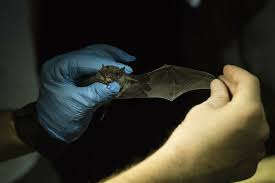Monitoring Desk
NEW YORK: Marburg virus, a highly contagious and often fatal disease, has recently made headlines due to its outbreak in parts of Africa.
The virus is transmitted to humans from fruit bats and spreads through close contact with infected bodily fluids.
Deadly symptoms
The Marburg virus causes severe hemorrhagic fever in humans, with a case-fatality rate ranging from 23% to 90%. The disease’s symptoms are sudden and include fever, chills, headache, myalgia, and a maculopapular rash on the trunk.
Nausea, vomiting, chest pain, sore throat, and diarrhea may follow. Symptoms worsen and may lead to jaundice, inflammation of the pancreas, weight loss, delirium, shock, liver failure, massive hemorrhaging, and multi-organ dysfunction.
Precautionary measures
Preventing Marburg virus infection remains a challenge, as transmission from wildlife to humans is still under study.
However, avoiding contact with fruit bats and sick non-human primates in central Africa is one way to protect against infection. If a patient is either suspected or confirmed to have Marburg hemorrhagic fever, barrier nursing techniques should be used to prevent direct physical contact with the patient.
There is no specific treatment for Marburg hemorrhagic fever, but early supportive care, such as rehydration and symptomatic treatment, can improve survival rates.
A range of blood, immunological, and drug therapies are under development, but as yet, there is no licensed treatment proven to neutralize the virus.
Next pandemic
Marburg virus is a serious threat to public health, and it is crucial that people take preventive measures to reduce the risk of transmission.
Public health officials are working tirelessly to develop effective treatment options and a vaccine to combat the spread of the virus. In the meantime, individuals can do their part by taking steps to protect themselves and their communities.







